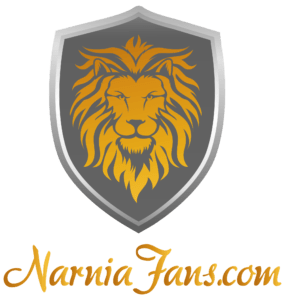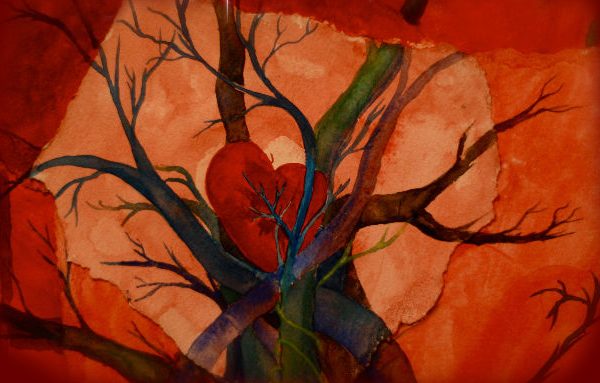Can you talk a little about the range of effects you’ve got planned? We’ve seen the digital matting, —
Yeah, tons and tons of breadth and snow and stuff like that. The biggest challenge, I mean, it’s a pretty wide swamp of effects and obviously the CG creatures are for us, the toughest. Not just because we want to make them look real and all that, it’s because in this movie they’ve got lead roles.
There is Aslan, the beavers – both beavers are very funny and they’ve got pivotal dramatic points, they have to help the kids along the way -, you’ve got the bad guys that help the Queen and Ginarrbrik [her dwarf], who are real people, and they’re all fully CG except for the wolves. We do have real wolves that we’re basing our characters on, being that they’re basically a hybrid of wolves and dogs. They’re good for little bits of running and small pieces of action and then they’ll tend to go and be a dog again. So, it’s good for a little bit but for the most part we’re planning on doing CG because the wolves in this movie are not your typical wolves. The wolves are smart and intelligent and they may be brutal and mean but they have a purpose. So, when they’re moving and looking around you have to see the intelligence. It would differentiate them from all the other characters. We’re creating the beavers who are smart and talk and all that stuff. And then we’ve got it for this other character, the fox, which is a very endearing character and heroic as well.
So for us, to be able to pull off convincing performances that reach the audience emotionally and don’t blow the illusion of – this is an animal but he’s a character and he can talk too – is going to be a tough one but we’re up to it. And then have the kids with their performances when they’re all interacting together, you want to believe the kids are believing the animals are there too. Even on set, it’s a daily challenge to make sure the kids are really in the moment, that they’re seeing the animals there, and a lot of times Andrew [Adamson] and his assistant will actually perform the scene. So Andrew will sit there and he’ll be the Beaver and she’ll be Mrs. Beaver and just sit there and make eye contact with the kids and get them to feel it and believe it.
Other times we use wacky things on set. I’ve been wearing this stuffed lion head, I’ve got sort of BMX motorcross chestplate with a speed rail connection and there’s a head that’s got a pole and I stick it there and I’ll be on set talking to the kids so they can look right at where Aslan would be and we’ll shoot a take or two of that. Sometimes I put a little stuffed animal or a piece of tape, just something for them to look at.
The beavers have a pretty big role, did you motion-capture somebody and then map the beaver onto it or are they entirely in the computer?
No, they’re all going to be CG-animated. There is a lot of full animation, they’ve done a lot of reference for wolves, I don’t think we’re going to motion capture wolves, we will have all their running plates that were shot, all the second unit footage. We aren’t currently motion-capturing lions, we haven’t decided that but we are going to do horses, there are going to be CG horses in the battle as well as centaurs so we can use that motion for both characters to some degree. We are using on-set motion capturing extensively for all the creatures with hooves, we’re capturing all the data. We know we’re using it for Tumnus, we’re likely to use it for several other characters too but we’re going to capture it for everything and whether it becomes just a help for tracking or if we use it specifically to draw the animation, we’ll decide as we process the data and look at the shots. Sometimes when you’re doing 40 characters out there you might decide that motion capture isn’t the way to go, we can just do it animated, but we’re going get he data just to make sure – and the stuff we’ve seen back has been great.
What was the experience like doing the motion-cap for the faun, Mr. Tumnus, specifically?
It was interesting when James [McAvoy] flew in we only had a few hours to deal with him. He arrived literally days before our first day on set with him and so Howard [Berger] needed his time with him, Andrew [Adamson] needed his time with him and of course we needed our time with him because we had to figure out – how does a faun walk? – Tumnus being a lead character is going to set the tone for all the fauns. So what we did for James is we put him in a whole motion capture suit, we had our faun rig, a CG character with the bone skeletal structure and we just let him practice and do different things and try different stuff and see what works, what looks good and where does he break?
Because you can only go so far and the legs actually won’t do what human legs can do. So we wanted to test those boundaries so then when we’d get on set, we’d get data that would work. For him, I mean we ran the set, I played Lucy (laughs), and he used that as a tool to find the character too. Because on the day [of shooting] we didn’t want him to have to worry about it or think about, he would concentrate on his performance and the legs would just be there. We were watching the dailies and it’s amazing, the slightest little shuffle, step or movement, it’s those nuances that just add to his character. At first, he had created this jittery goat character but this little stuff will just be priceless, you would otherwise need weeks and weeks to try and animate it, and it’s just there.
Besides the characters, what other type of CG animation can we expect?
We have a host of other effects we have to do for the movie. We have CG ice that’ll be used in a couple of structures in the film. You saw the White Witch’s courtyard, of course, and the whole castle itself is made out of ice. There are several of the sets inside the castle that are ice structures. Also, the kids come upon a frozen waterfall and that’s going to be a huge sequence for us because we’re going to use a combination of miniatures and CG ice, CG water and all that stuff and as the kids run across the ice, the idea is it gets more and more precarious for them. We’ll have ice cracking and water gushing and all sorts of craziness will be going on around while they’re trying to make their way across the waterfalls.
We saw this process by which they’re using lasers to measure sets down to the millimeter and it gives you 3D environments. How does that help you?
It’s been used previously and at first I wasn’t sure how much we were going to use it. It’s called LITAR and those guys can tell you a lot more about how it works, it does so many scans and it’s got such a resolution that apparently if they turn it up really, really to high, like 11, it could sort of burn a hole through the ground or something. (laughs) It’s a pretty strong laser. For us, it grabs all the terrain which is essential for when we need to put all our CG characters up there in and have them moving across, so it looks like they’re really hitting the ground. An added effect for us is that we can track our cameras to it, so whenever we have a moving camera, and the camera is constantly moving on this movie, since we have the whole set basically scanned and digitized we can use pieces of it to help track the shots and not have to put so many markers all over the place.
We also have tons of set extensions, mat paintings obviously helping to create the environment. We’re shooting lots and lots of green environments so we just have to extend it out and create it. One of the cool things about going down to the South Islands is that we’re going to open up and see a lot of area. Another cool thing is Don McAlpine, our director of photography, who is just a great guy, he’s like a kid on set, he buys all these toys, he has more Mac toys than I do; he is doing something really amazing on this movie, basically he is lighting the movie for digital post. It’s something we did on both The Two Towers and The Return of the King completely and a little bit on The Fellowship of the Ring. What Don is doing is he’s lighting the set and knowing what he’s going to do later.
Can you speak a little about the final battle sequence?
That sequence will be pretty cool because there are several scenes where, when the kids meet Aslan and then when the Witch comes to confront him and then later in the battle there are scenes where we’re going to have to populate the environment with tons and tons of creatures. We’ve got everything from ogres and cyclops’ and centaurs, some which will be part prosthetic and others will be completely digital. Same thing on the good guys side, we’ve got little animals and big cats and all sorts of things that’ll be brought into the battle. So, once we get going on that it’ll send it all into high gear.
We saw the pre-viz [animated storyboard sequence on the computer] of the final battle, does that help you a lot?
Oh, did you? It’s actually a great help. We’ve been trying the pre-viz, off and on, so far in the movie and when we start a scene we usually look at it and then talk about it and then Don [McAlpine] and Andrew [Adamson] will sit and sort of make their shot list based on that. Sometimes scenes just get chucked aside because they could tell that’s maybe too many shots. So they’ll ink their essential shot list and we always have the B camera that can be thrown in for bonus shots. What typically happens is Don will get out there with our camera operator and they’ll just find this cool new shot that we never even thought of and that’ll be our master.
For the actual creatures themselves, how photo-realistic are they going to be?
We’re going for completely photo-realistic. Andrew won’t be happy otherwise. We are going to have prosthetic creatures on set that we will have to match to for any of the on-set creatures. We may do some enhancements in terms of facial stuff because not every creature has a radio-controlled face; there are some that aren’t. So we may go into post and add little extra emotions and facial movements that we can’t get on the day.
Will who the voice actor is, play any part in the look of the character?
It could. I mean obviously once we hear the voice we may want to adapt some of the facials to help reflect that. The stuff that Howard [Berger] is doing on set, in terms of facial for Aslan, is when he is on the Stone Table. Anytime he’s acting, talking or moving other than that, it’s us. It’s CG.


